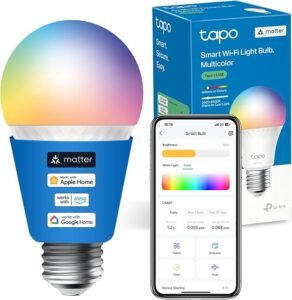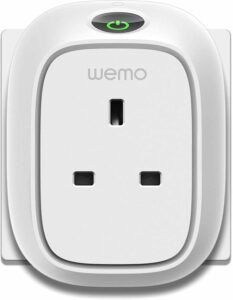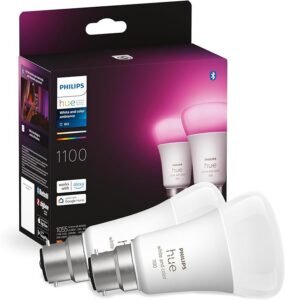Smart Lighting: The Rise of Smart Home Automation

With a wide range of smart devices for different home automation areas like smart security, smart entertainment, smart home heating and climate control, smart lighting… smart home lighting is one of the most popular areas everybody looks at when starting, offering a wide range of solutions. Smart switches, smart bulbs, and smart plugs are the most common components to improve your home lighting and all of them offer similar capabilities but with unique features at the same time. But with so many options, how do you know which one is right for your needs?. Let me advance you that it will depend on the different use cases you want them for.
We hope this guide helps you to decide. Let’s take a deep dive into the key differences between smart switches, smart bulbs, and smart plugs, and figure out which one fits your lifestyle.
What Are Smart Switches, Smart Bulbs, and Smart Plugs?
Before we get into the comparison, let’s briefly break down what each of these devices does:
- Smart Switches: These replace traditional wall switches and give you the ability to control lights (and sometimes appliances) remotely. You can use a smartphone, voice commands, or automation systems to control them.
- Smart Bulbs: These are LED light bulbs that connect to your home Wi-Fi, allowing you to change the brightness, color, and sometimes even the temperature, all from your smartphone or with voice commands.
- Smart Plugs: Plug a smart plug into any regular outlet, and it turns ordinary appliances (like lamps, coffee makers, or fans) into “smart” devices. You can control them remotely through apps or voice assistants.
Now, let’s explore the key differences and help you decide which device suits your needs best!
Smart Switches vs. Smart Bulbs vs. Smart Plugs: A Quick Comparison
| Feature/Criteria | Smart Switches | Smart Bulbs | Smart Plugs |
|---|---|---|---|
| Primary Function | Control lights and appliances via wall switches | Control individual lights, adjust brightness and colour | Control non-smart devices like lamps, coffee makers, fans |
| Control Method | Smartphone app, voice commands, or automation systems | Smartphone app, voice commands, automation schedules | Smartphone app, voice commands, automation schedules |
| Energy Monitoring | Yes (tracks energy consumption) | No (some bulbs track energy but not commonly) | Yes (monitors energy usage of plugged-in devices) |
| Compatibility | Works with existing light fixtures and smart home hubs | Works with various lighting setups, may require a hub | Works with any appliance plugged into a regular outlet |
| Installation | Replaces existing wall switches (may require professional installation) | Easy to install, replace standard bulbs | Simple installation, plug into an existing outlet |
| Automation Features | Schedules, motion sensors, occupancy simulation for security | Customizable schedules, motion sensors, colour and brightness control | Schedules, timers, remote on/off control |
| Voice Control | Yes (via Alexa, Google Assistant, Apple HomeKit) | Yes (via Alexa, Google Assistant, Apple HomeKit) | Yes (via Alexa, Google Assistant, Apple HomeKit) |
| Best For | Whole-home lighting control and for enhancing home security | Personalized lighting, ambiance creation and for mood lighting | Making everyday appliances smarter and for energy management |
| Price Range | Moderate to high (depending on brand and features) | Moderate (depending on brand, colour features, and hub requirements) | Low to moderate (depending on brand and features) |
| Examples of Popular Brands | Lutron Caseta, TP-Link Kasa, Leviton Decora Smart | Philips Hue, LIFX, Sengled | Amazon Smart Plug, TP-Link Kasa, Wemo Mini |
Understanding Smart Switches
Smart switches are a game-changer when it comes to upgrading your home’s lighting control. Instead of using traditional, manual switches, smart switches give you the power to control your lights remotely.
Installing a smart switch might require a little more work than replacing a light bulb, but the benefits are totally worth it. You can schedule lights to turn on and off automatically, set motion sensors for security, or even simulate occupancy while you’re away to deter potential intruders.
Another great thing about smart switches? They integrate seamlessly with your existing light fixtures and home automation system. You can control multiple lights in one room or even an entire floor from one place, making it an excellent choice if you want centralized control.
Smart Bulbs: The Perfect Lighting for Any Mood
Smart bulbs are the go-to option for anyone looking to create personalized lighting experiences. If you’ve ever wished for the ability to adjust your lights to match your mood, smart bulbs have you covered.
You can choose from a wide range of colours with RGB bulbs, change the light’s temperature with tuneable whites, or simply adjust brightness for a cosy ambiance. Plus, most smart bulbs are energy-efficient LEDs, so you’re saving energy while enjoying a customized lighting setup.
What’s even better is the ease of installation. Simply screw in your smart bulb, connect it to your home Wi-Fi, and you’re ready to start adjusting settings via your phone or voice assistant. For those who want the ultimate convenience, you can even set up schedules and automate your lighting based on your routine.
Smart Plugs: Turning Everyday Devices into Smart Ones
Smart plugs may be the simplest and most affordable way to enter the world of smart home automation. These little gadgets can turn just about anything you plug into them into a “smart” device. Want to control your coffee maker, fan, or lamp from your phone? A smart plug can make that happen.
Smart plugs don’t just offer basic on/off control; they can also monitor energy consumption and help you optimize usage. For example, you could schedule your coffee maker to start brewing at a certain time each morning or automatically turn off your fan after a set period.
If you’re looking for an easy way to upgrade your non-smart appliances, a smart plug is an excellent choice.
Pros and Cons of Smart Switches vs Smart Bulbs and Plugs
When deciding which smart home lighting solution to choose, it’s important to weigh the pros and cons of each device. Below you can find a breakdown of the benefits and limitations of smart switches, smart light bulbs, and smart plug sockets to help you make an informed decision (refer to comparison table above)
Smart Switches (Pros & Cons)
- Pros:
- Centralized Control: Control multiple lights from one switch.
- Energy Savings: Help save energy by automating when lights turn on and off.
- Enhanced Security: Enhance security with occupancy simulation
- Cons:
- Installation Complexity: Installation can be tricky for old homes and may require a professional
- Compatibility Issues: Not all light fixtures are compatible.
- Cost: Higher price, especially when factoring in installation.
Smart Bulbs (Pros & Cons)
- Pros:
- Customizable Lighting: Full control to customise colour, brightness, and temperature.
- No Wiring Needed: No complicated installation; just replace your old bulbs.
- Energy Efficient: LED smart bulbs are energy-efficient and long-lasting
- Cons:
- Replacement Costs: Requires replacements of your traditional bulbs. Higher upfront cost compared to regular bulbs.
- Wi-Fi Dependency: Some models may require a stable Wi-Fi.
Smart Plugs (Pros & Cons)
- Pros:
- Affordable Entry Point: More affordable than smart switches or even smart bulbs.
- Versatile Control: Great for controlling non-smart appliances, turning regular devices (like lamps, coffee makers, or fans) into smart devices.
- Energy Monitoring: Many of them offer energy monitoring capabilities.
- Cons:
- Limited Control Over Lighting: Just offer turn on/off features not allowing to control colour, brightness, and temperature like the smart bulbs.
- Wi-Fi Dependency: Wi-Fi dependency can cause issues with connectivity.
- Bulky Design: Some smart sockets can be large and may block adjacent outlets.
- Not Ideal for Large Lighting Setups: Not ideal for controlling lighting in large setups.
Popular Brands and Products for Smart Homes on Amazon
There are lot of brands on the Amazon marketplace you can chose to implement your smart home lighting, like TP-Link, Tapo, Wemo or even Philips . Below you can find some of the most popular options, highlighting their key features, user ratings, and price ranges.
- Tapo Smart Wi-Fi Light bulb:
- Features: Remote control, voice control (Alexa, Google Assistant), affordable.
- User Rating: Typically 4-star and above.
- Price: Around £20-£25 (different models and prices)

- Wemo Smart Plug:
- Features: Compact design, easy setup, scheduling capabilities, voice control.
- User Rating: Frequently 4.5 stars and above.
- Price: Approximately from £25 to £50 (different models and prices)

- Lutron Caseta Wireless Smart Switch:
- Features: Dimming capabilities, broad compatibility, high reliability.
- User Rating: Often above 4.7 stars.
- Price: Typically starts at £40 (different models and prices)

- Philips Hue White and Colour Ambiance Bulbs:
- Features: Wide colour spectrum, app control, voice control, extensive ecosystem.
- User Rating: Approximately 4.5 stars.
- Price: Around £50 per bulb (different models and prices)

Real-Life Use Cases and Scenarios for Smart Lighting Devices
Smart switches, smart light bulbs, and smart plugs offer lot of practical applications that can significantly change your daily life. Here we explain some use cases and scenarios you could fit with your lifestyle:
Smart Light Switches for security Enhancement
- Integrate with motion sensors to automatically activate exterior lights when someone approaches the property, deterring potential intruders.
- Simulate occupancy by programming lights to turn on and off at specific times, even when no one is home.
Smart Bulbs for the perfect Mood Setting
- Create dynamic lighting effects for various occasions, such as dinner parties or movie nights, using colour-changing bulbs.
- Adjust brightness and colour through smartphone apps or voice commands.
- Integrate with other smart home systems to create personalized lighting schedules that adapt to the time of day.
Smart Plugs for Routines Automation
- Schedule coffee makers to brew in the morning for a convenient wake-up experience.
- Remotely control fans and heaters to optimize energy usage based on personal preferences and weather conditions.
To understand more about smart home lighting and the latest market trends and available options read the article “Smart Home Lighting“
Which One Is Right for You?
After exploring in this article the features, benefits and limitations of smart switches vs bulbs vs plugs, the optimal choice ultimately depends on your individual needs and preferences.
Our suggestion to implement the perfect lighting systems for your home would be to go with a combination of all of them. Working together, these devices enhance convenience, security, and comfort, creating a more intelligent and enjoyable living experience.
- Smart Switches: Ideal for those seeking centralized control over multiple fixtures. They provide the ability to automate entire rooms or areas of your home.
- Smart Bulbs: Offer flexibility and customization, allowing for personalized lighting experiences with a wide range of colours and dimming options. Ideal for rooms such as living rooms or bedrooms.
- Smart Plugs: Provide a versatile solution for transforming any non-smart appliance into a smart device. Ideal for those looking to automate their homes without significant upgrades or replacing existing devices.
